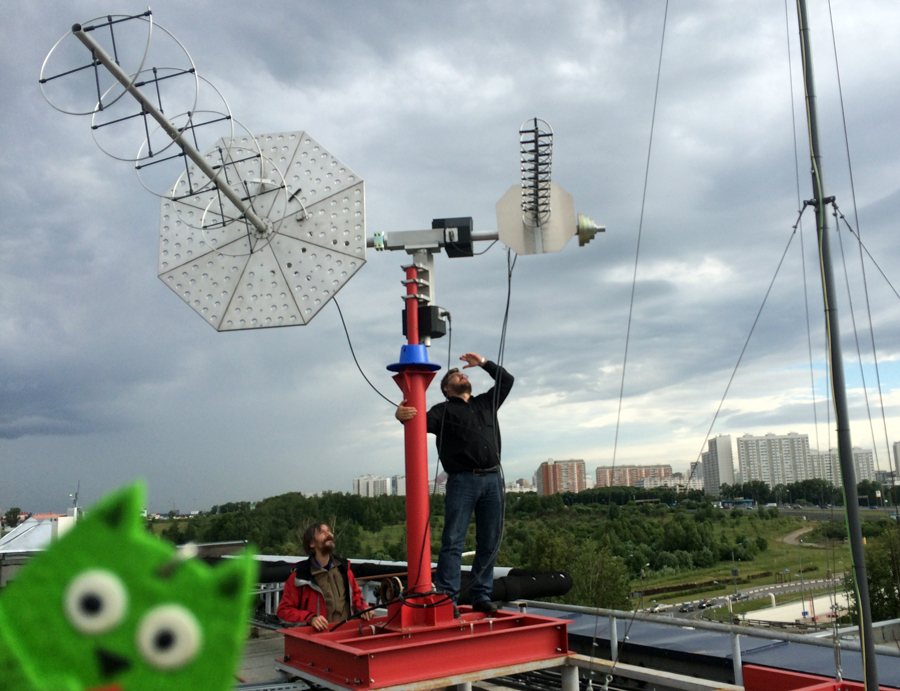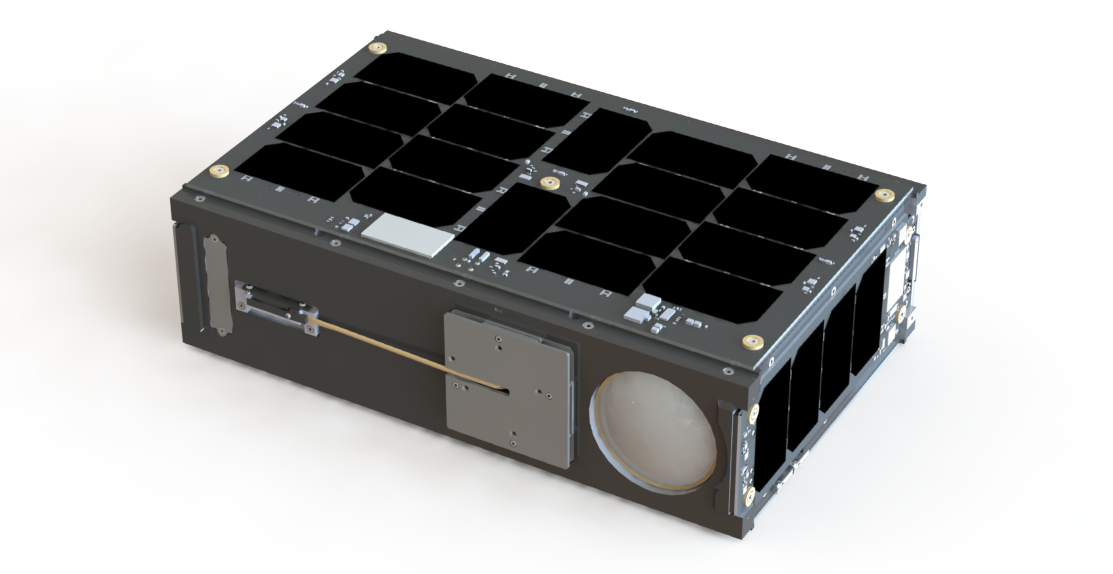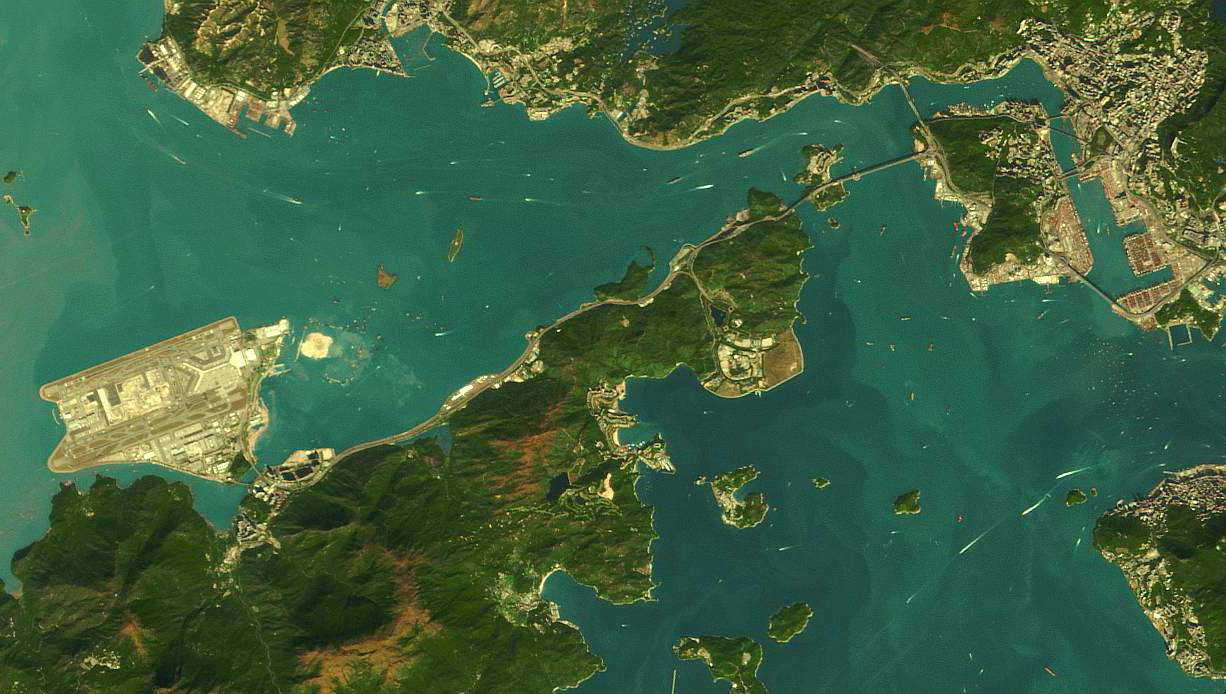"Dauria" in space
What does space flight look like?
Each will present some kind of his own image: someone will remember Gagarin's smile, someone has beautiful wings of the space shuttle, someone will see the solar “sails” of the International Space Station ... Even the rovers crawling over 100 million km are officially in flight. For the same unmanned cosmonautics, space most often looks like this:

Dry telemetry abracadabra, which is understandable only to professionals - this is the most important thing that is expected immediately after the launch of the device. This is the answer of the satellite equipment to the question: “How is it yourself?” The machine responds with a set of numbers and letters that allow you to accurately determine the state of the entire apparatus and the installed equipment: performance, power consumption, temperature ...
')
So "Dauria Aerospace" saw her first set of letters and numbers.
I have already been explained a little that FM1 is the call sign of our device, confirmation that it is ours, and not some of the 33 satellites launched by the conversion Dnipro last night. Experts will read much more here. But here I see not only information about the life of an 11-kilogram piece of aluminum, copper and silicon. This is, first of all, the confirmation that two and a half years of efforts, several million dollars, and thousands of man-hours of highly qualified specialists on both sides of the ocean were not in vain. The spacecraft is really in space, and sends us its telemetric greetings from there.
It was really difficult, but also interesting. Although I didn’t screw a single nut, I didn’t write a line of code, but today I got to Habr after the 34-hour marathon of press conferences, press releases, speeches, sending invitations, meeting guests, live broadcasts from the spaceport, applause, tense waiting in the control room, the white noise of radio interference, the cold morning wind of the roof and, finally, the unreasonable joy of the incomprehensible “FM1” on the MCC monitor.
Yes we flew
Night launches of Dnipro are rare, so the video is rather unattractive, but it was kindly sent to us by the staff of Kosmotras , immediately after launch. This start was a record. For the first time in history, one rocket displays such an international flock of private commercial satellites, among the three dozen of which were Russian.

The first private Russian was " Tablet Sat Aurora " from the company "Sputniks". Our two Perseus-M, although in fact belong to the Russian "Dauria", but were created in the California division in Silicon Valley.

But this did not mean at all that the Russian specialists reacted indifferently to the launch. And when the management of Dauria accepted congratulations, at the other end of Moscow, in the Skolkovo office, at MCC, a group of engineers was on duty, ready to receive the first signals from space.
The first communication session was held on June 20 at 00:40, one and a half hours after launch. But the satellite did not rise high above the horizon, so a clear signal and confirmation could not be obtained. I had to wait for the next communication session: at 02:20. This time, we managed to detect short pulses with a frequency of 20 seconds, but so far they did not carry telemetric information.
Only closer to noon did the faint hiss turn into coded information transformed into telemetry. This meant the completion of a long startup process. Now you can say with confidence: the first satellites of the Russian private space company Dauria Aerospace are successfully launched into Earth orbit and are ready to go!

Now it remains to be small: to teach them how to make money.
What work can perform such kids, size 10x20x30 cm?
This is a traditional question that is asked immediately after the first one: “You, what do you do with spacecraft?”
The Perseus microplatform is practically a full-fledged spacecraft equipped with a stabilization and orientation system. Only that the rocket engine is not enough, and the indispensable elements of a “real” satellite are: flywheel engines, magnetic actuators, an autonomous power supply system, a star sensor, a high-speed data transmission system ... That is, satellites of this type and dimensions are capable of performing various tasks representing including commercial interest.

Perseus-M - maritime - will determine the location of ships on seas and rivers, using the signals of the Automatic Identification System ( AIS ). This is not as interesting as, for example, photography, but such information is in demand in the domestic and global market. In addition, the operating experience of Perseus-M will allow you to work out a platform for more complex tasks and, already in 2015, to switch to the observation of the Earth’s surface.

The next generation of devices, Perseus-O - observation - should be engaged in multispectral shooting with a resolution of 22 meters. While these are plans for the coming years, it is more interesting for me to talk about accomplished cases and results in space. Therefore, I am glad that talking about the work of Dauria you can change the future time to the present. Only by turning plans and promises into deeds and accomplishments can you earn trust. This is what we will do. But now it's time to sleep.
Each will present some kind of his own image: someone will remember Gagarin's smile, someone has beautiful wings of the space shuttle, someone will see the solar “sails” of the International Space Station ... Even the rovers crawling over 100 million km are officially in flight. For the same unmanned cosmonautics, space most often looks like this:

Dry telemetry abracadabra, which is understandable only to professionals - this is the most important thing that is expected immediately after the launch of the device. This is the answer of the satellite equipment to the question: “How is it yourself?” The machine responds with a set of numbers and letters that allow you to accurately determine the state of the entire apparatus and the installed equipment: performance, power consumption, temperature ...
')
So "Dauria Aerospace" saw her first set of letters and numbers.
I have already been explained a little that FM1 is the call sign of our device, confirmation that it is ours, and not some of the 33 satellites launched by the conversion Dnipro last night. Experts will read much more here. But here I see not only information about the life of an 11-kilogram piece of aluminum, copper and silicon. This is, first of all, the confirmation that two and a half years of efforts, several million dollars, and thousands of man-hours of highly qualified specialists on both sides of the ocean were not in vain. The spacecraft is really in space, and sends us its telemetric greetings from there.
It was really difficult, but also interesting. Although I didn’t screw a single nut, I didn’t write a line of code, but today I got to Habr after the 34-hour marathon of press conferences, press releases, speeches, sending invitations, meeting guests, live broadcasts from the spaceport, applause, tense waiting in the control room, the white noise of radio interference, the cold morning wind of the roof and, finally, the unreasonable joy of the incomprehensible “FM1” on the MCC monitor.
Yes we flew
Night launches of Dnipro are rare, so the video is rather unattractive, but it was kindly sent to us by the staff of Kosmotras , immediately after launch. This start was a record. For the first time in history, one rocket displays such an international flock of private commercial satellites, among the three dozen of which were Russian.

The first private Russian was " Tablet Sat Aurora " from the company "Sputniks". Our two Perseus-M, although in fact belong to the Russian "Dauria", but were created in the California division in Silicon Valley.

But this did not mean at all that the Russian specialists reacted indifferently to the launch. And when the management of Dauria accepted congratulations, at the other end of Moscow, in the Skolkovo office, at MCC, a group of engineers was on duty, ready to receive the first signals from space.
The first communication session was held on June 20 at 00:40, one and a half hours after launch. But the satellite did not rise high above the horizon, so a clear signal and confirmation could not be obtained. I had to wait for the next communication session: at 02:20. This time, we managed to detect short pulses with a frequency of 20 seconds, but so far they did not carry telemetric information.
Only closer to noon did the faint hiss turn into coded information transformed into telemetry. This meant the completion of a long startup process. Now you can say with confidence: the first satellites of the Russian private space company Dauria Aerospace are successfully launched into Earth orbit and are ready to go!

Now it remains to be small: to teach them how to make money.
What work can perform such kids, size 10x20x30 cm?
This is a traditional question that is asked immediately after the first one: “You, what do you do with spacecraft?”
The Perseus microplatform is practically a full-fledged spacecraft equipped with a stabilization and orientation system. Only that the rocket engine is not enough, and the indispensable elements of a “real” satellite are: flywheel engines, magnetic actuators, an autonomous power supply system, a star sensor, a high-speed data transmission system ... That is, satellites of this type and dimensions are capable of performing various tasks representing including commercial interest.

Perseus-M - maritime - will determine the location of ships on seas and rivers, using the signals of the Automatic Identification System ( AIS ). This is not as interesting as, for example, photography, but such information is in demand in the domestic and global market. In addition, the operating experience of Perseus-M will allow you to work out a platform for more complex tasks and, already in 2015, to switch to the observation of the Earth’s surface.

The next generation of devices, Perseus-O - observation - should be engaged in multispectral shooting with a resolution of 22 meters. While these are plans for the coming years, it is more interesting for me to talk about accomplished cases and results in space. Therefore, I am glad that talking about the work of Dauria you can change the future time to the present. Only by turning plans and promises into deeds and accomplishments can you earn trust. This is what we will do. But now it's time to sleep.
Source: https://habr.com/ru/post/226981/
All Articles